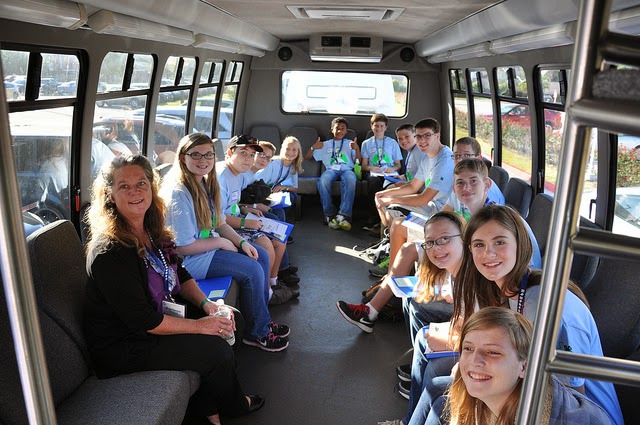We arrived at our second workshop for this project last night eager to learn. The boys actually got us there thirty minutes early. The man with Fury (the red-tailed hawk) had already arrived so they had a chance to talk to him before others arrived.
The training this month was a general overview of the types of birds used in falconry and the different aspects of the birds.
There are four main types of birds used:
| Edward with Fury |
Hawks are of the family Accipitridae and the genus Buteo. They are often called "broad wings."
- Red-Shouldered Hawk
- Red-Tailed Hawk
- Ferruginous Hawk
These are masters at soaring and can hang motionless on the merest threads of wind. These birds use their powerful feet and strong talons to bind to their prey constricting it in their grasp and puncturing vitals.
Accipiters
Accipiters are in the family Accipitridae and the genus Accipiter. T
hey are often called "true hawks" and "short wings" and sometimes the "yellow-eyed hawks".
- Cooper's Hawk
- Goshawk
These birds are marked by their broad, round wings that are shorter than Buteos, short neck, and long tails. Juvenile eyes are yellow turning to red in adulthood. These are quick birds off their perch and will easily overtake their prey. Their typical flight pattern is a flap-flap-flap followed by a glide.
Eagles
Eagles are in the family Accipitridae and the genus Aquila.
- Golden Eagle
These birds have long, broad wings and a medium tail. Bald eagles are not used for falconry, but have an interesting iris in that it starts as brown and matures to be yellow.
Falcons
Falcons are in the family Falconidae and the genus Falco. They are often called "long wings" and sometimes the "dark-eyed hawks" or "pointy wings".
- American Kestrel
- Peregrine Falcon
These birds have a much different body form than the others listed here. They have long, pointed wings due to the long second primary and third primary feathers, and a long tail. The short, hooked beak has a unique notch specifically for snapping the neck of prey. The notch is sometimes referred to as a tooth, but more completely called the tomial tooth. Their toes are long and thin with knobby nodules to help hold on to small birds when they grab them. They have less substantial talons than hawks or eagles.
Other Birds
| Sean with Xena |
Owls (Strigiformes) have been used with various amounts of success. Great Horned Owls have been used to catch game. These birds are quiet as they soar across the sky due to the formation of eyelash type feathers on the upper part of their upper wings.
We also learned about the parts of the birds...the types of feet (including talons), wings, beaks and feathers. It was very interesting; however, the real excitement came when the participants were offered the opportunity to pt on a glove and hold one of the birds!
All of the boys held the red-tailed hawk, Fury. When all the youth had the opportunity, the adults were asked if they wanted a chance also. I was the second in line to take my turn. It was an awesome feeling to hold such a powerful bird on my fist. The keys was to always hold the bird above your elbow. They did not tell us why this was important but I think it must be a signal to take flight if the hand is lowered or maybe the bird likes a high perch. I am sure we will learn more as we continue the classes.
| Henry with Oliver |
| Oliver trying to take flight |
Sean and Henry also took time to hold Oliver (the Great Horned Owl) and Sean held Xena (the Harris' Hawk).
We look forward to learning more from Mr. Vance and his friends.








